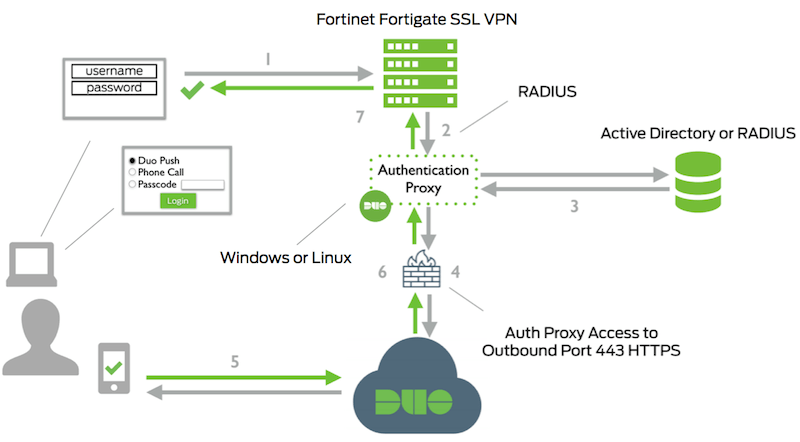
- #FORTINET VPN CLIENT VPN FOR ANDROID#
- #FORTINET VPN CLIENT VPN SOFTWARE#
- #FORTINET VPN CLIENT VPN PC#
Also, it encrypts data packets destined for the other end of the VPN tunnel, encapsulates them, and sends the IPsec packets to the other VPN gateway. It receives incoming IPsec packets, decrypts the encapsulated data packets and passes the data packets to the local network. The default gateway setting in your computer’s TCP/IP properties specifies the gateway for your local network.Ī VPN gateway functions as one end of a VPN tunnel. VPN gatewaysĪ gateway is a router that connects the local network to other networks. This feature adds a geographical-IP API service for resolving spatial locations from IP addresses. FortiView VPN tunnel mapĪ geospatial map can be found under FortiView > VPN Map to help visualize IPsec (and SSL) VPN connections to a FortiGate using Google Maps. The tunnel list page also includes the option to create a new tunnel, as well as the options to edit or delete a highlighted tunnel. If you right-click on the table header row, you can include columns for comments, IKE version, mode (aggressive vs main), phase 2 proposals, and reference number. By default, the tunnel list indicates the name of the tunnel, its interface binding, the tunnel template used, and the tunnel status.

Once you create an IPsec VPN tunnel, it appears in the VPN tunnel list at VPN > IPsec Tunnels. On-demand tunnel for users using the Cisco IPsec client.
#FORTINET VPN CLIENT VPN FOR ANDROID#
On-demand tunnel for Android users using the native L2TP/IPsec client. On-demand tunnel for iPhone/iPad users using the native iOS IPsec client. On-demand tunnel for users using the FortiClient software. Static tunnel between this FortiGate and a remote Cisco firewall.įortiClient VPN for OS X, Windows, and Android Static tunnel between this FortiGate and a remote FortiGate. A list of these templates appear on the first page of the Wizard, located at VPN > IPsec Wizard. Several tunnel templates are available in the IPsec VPN Wizard that cover a variety of different types of IPsec VPN.
#FORTINET VPN CLIENT VPN SOFTWARE#
Third-party VPN software and a FortiGate unitįor more information on third-party VPN software, refer to the Fortinet Knowledge Base for more information.
#FORTINET VPN CLIENT VPN PC#
A PC equipped with the FortiClient application and a FortiGate unit.VPN tunnels Encoded data going through a VPN tunnel Encryption of the data packets ensures that any third-party who intercepts the IPsec packets can not access the data. IPsec packets pass from one end of the tunnel to the other and contain data packets that are exchanged between the local user and the remote private network. In the telecommuting scenario, the tunnel runs between the FortiClient application on the user’s PC, or a FortiGate unit or other network device and the FortiGate unit on the office private network.Įncapsulation makes this possible.

Like a physical tunnel, the data path is accessible only at both ends. The data path between a user’s computer and a private network through a VPN is referred to as a tunnel. IKE and IPsec packet processing VPN tunnels This chapter discusses VPN terms and concepts including: It is also possible to use a FortiGate unit to connect to the private network instead of using FortiClient software. A FortiGate unit can be installed on a private network, and FortiClient software can be installed on the user’s computer. It is also common to use a VPN to connect the private networks of two or more offices.įortinet offers VPN capabilities in the FortiGate Unified Threat Management (UTM) appliance and in theįortiClient Endpoint Security suite of applications. Instead of remotely logging on to a private network using an unencrypted and unsecure Internet connection, the use of a VPN ensures that unauthorized parties cannot access the office network and cannot intercept any of the information that is exchanged between the employee and the office. For example, an employee traveling or working from home can use a VPN to securely access the office network through the Internet. Virtual Private Network (VPN) technology enables remote users to connect to private computer networks to gain access to their resources in a secure way.


 0 kommentar(er)
0 kommentar(er)
